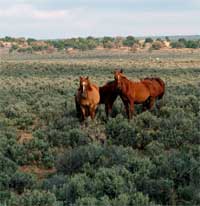
 Arizona is rich in history. The Earp brothers and Doc Holliday "shot it out" with the Clanton gang in October 1881 at the famous O.K. Corral in Tombstone, Arizona. Wyatt, Virgil, and Morgan Earp had been in a feud with the Clanton gang. Doc Holliday got involved in the "shootout" because he was a friend of the Earp brothers. Also, Geronimo, a famous Apache Indian chief, surrendered in the state in 1885. Arizona is rich in history. The Earp brothers and Doc Holliday "shot it out" with the Clanton gang in October 1881 at the famous O.K. Corral in Tombstone, Arizona. Wyatt, Virgil, and Morgan Earp had been in a feud with the Clanton gang. Doc Holliday got involved in the "shootout" because he was a friend of the Earp brothers. Also, Geronimo, a famous Apache Indian chief, surrendered in the state in 1885.
On February 14, 1912, Arizona became the last of the contiguous states (that is, not including Hawaii and Alaska) to join the Union. Because February 14th is Valentine's Day, the state has been called the "Valentine State." Finally, astronomers at the Lowell Observatory in Flagstaff discovered the planet Pluto in 1930.
No one is exactly sure where Arizona got its name. It may come from the Spanish version of the Pima Indian word for "little spring place." The state's name may also come from the Aztec word "arizuma," meaning "silver-bearing." The Spanish first used the name Arizona for mining camps by the Planchas de Plata mine. The state is nicknamed the "Grand Canyon State." The abbreviation for Arizona is AZ.
 Arizona has changed greatly since the 19th Century when the state was a typical mining and cattle territory of the Old West. Today, portions of the Old West remain for tourists, but Arizona has become a modern industrial state with large cities, modern farms, and quickly growing industries. Arizona has changed greatly since the 19th Century when the state was a typical mining and cattle territory of the Old West. Today, portions of the Old West remain for tourists, but Arizona has become a modern industrial state with large cities, modern farms, and quickly growing industries.
With around 155,000 Indian residents, Arizona has the third largest Indian population in the country; only Oklahoma and California have larger Indian populations. More than a quarter of the state's land consists of Indian reservations and about three-quarters of the Indian population live on a total of 20 reservations. Thirty-eight percent of all United States tribal lands are located in the southwest portion of the state.
Native Americans have played an important role in Arizona's history. The region that makes up the state was first controlled by the Spanish and later controlled by Mexico before it entered the Union. During those times, the Indian, Spanish, and Mexican cultures came in contact with each other. Today, the Spanish and Mexican influences can be seen in architectural styles, customs, foods, and the names of places.

 Arizona has many farm and mineral products. It is a leading producer of copper -- that's why one of it's nicknames is the "Copper State." The state's chief crop is cotton. About 70 percent of Arizona's land is either controlled or owned by the United States Government. Dams built by the government or with federal funds irrigate the desert so that it can be used as farmland. The dams also provide electricity to the cities and industry. Arizona has many farm and mineral products. It is a leading producer of copper -- that's why one of it's nicknames is the "Copper State." The state's chief crop is cotton. About 70 percent of Arizona's land is either controlled or owned by the United States Government. Dams built by the government or with federal funds irrigate the desert so that it can be used as farmland. The dams also provide electricity to the cities and industry.
Along with growing industries, Arizona has a growing population. The state's population increased by five times between 1950 and 1990. If you're looking for a better environment in which to live, Arizona is the place for you. Many Americans have moved to the state for that reason. Also, Arizona's mild winter weather attracts retirees. Most of the state's residents live in the desert.

Arizona is a southwestern state bordered by Utah to the north, New Mexico to the east, Mexico to the south, and California and Nevada to the west. It is the sixth largest state. Phoenix is the state's capital. Other important cities in the state include Tucson and Tempe.
Arizona's beautiful landscape includes mountains and valleys, high plateaus, narrow canyons, and amazing stretches of desert. More than half of the state is made up of mountains and plateaus. In these regions, you'll find the largest ponderosa pine forests in the country and herds of grazing cattle and sheep. Arizona has seven national forests.

 Arizona's beauty and mild winter are two reasons many tourists go to the state. Visit the spectacular Grand Canyon, one of the seven natural wonders of the world, in the northern part of the state. See brilliantly colored rocks and clays that were once hidden under the sand and have been uncovered by erosion in the Painted Desert. Go to the Petrified Forest to see beautiful fossilized trees that died millions of years ago. Visit Montezuma Castle and eight other ancient Indian ruins that have been designated national monuments. Discover animals and plants that aren't found anywhere else in the country at Pipe Cactus National Monument. Arizona's beauty and mild winter are two reasons many tourists go to the state. Visit the spectacular Grand Canyon, one of the seven natural wonders of the world, in the northern part of the state. See brilliantly colored rocks and clays that were once hidden under the sand and have been uncovered by erosion in the Painted Desert. Go to the Petrified Forest to see beautiful fossilized trees that died millions of years ago. Visit Montezuma Castle and eight other ancient Indian ruins that have been designated national monuments. Discover animals and plants that aren't found anywhere else in the country at Pipe Cactus National Monument.
|